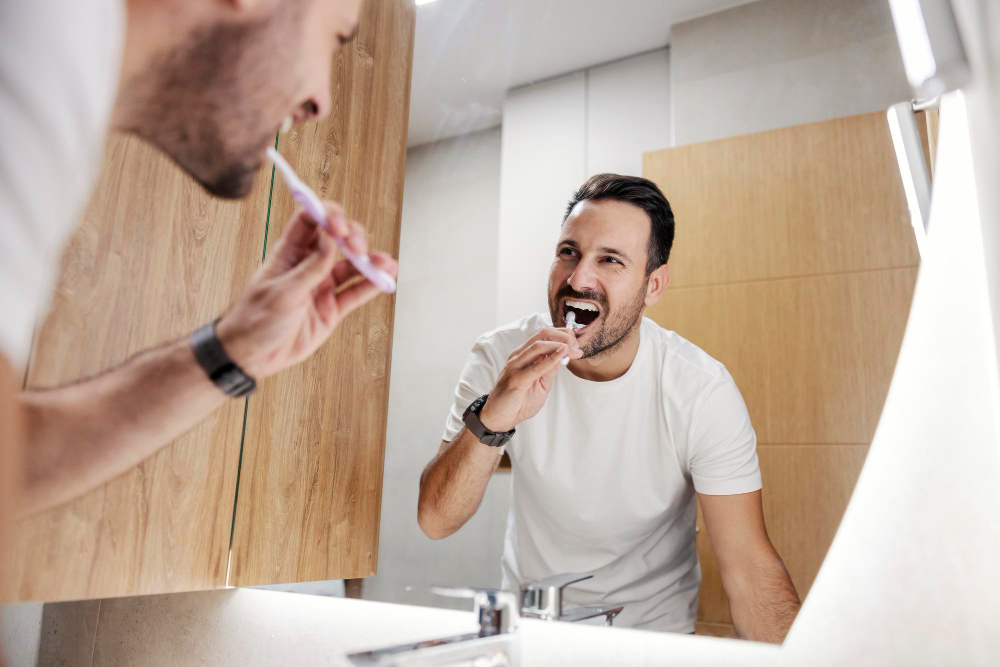

Protecting our oral and dental health is very important for both our teeth and our body. Bacterial plaques and food residues formed on the teeth cause deformation of the teeth and gum diseases over time. If we clean our teeth with the correct brushing technique, we will protect our oral and dental health and prevent problems that may arise in the future. Brushing with incorrect tooth brushing methods, using a hard toothbrush, and brushing too frequently are among the mechanical causes of gum recession. Structural disorders of the lip-gum bond, various gum diseases, faulty fillings and crowns cause gingival recession. Tooth extraction is a very serious problem. Therefore, brushing teeth correctly is important.
There are some tooth brushing techniques recommended by health institutions and famous scientists. While these techniques have general purposes, they can also be preferred methods for special situations. The most popular tooth brushing techniques are as follows:
To prevent and control gum disease, it is necessary to brush under and around the gum line, where bacteria and plaque tend to accumulate. The toothbrush bristles reach under the intestines to remove the plague before it turns into a terror and causes gum disease. It is the most accepted technique of modified bass technique.
The steps of this technique are as follows:
Hold the toothbrush with the bristles parallel to your teeth.
Tilt the brush at a 45-degree angle and gently move the bristles below the gum line.
Using gentle pressure and keeping the bristles of the brush under the gum tissue, move or vibrate the brush back and forth or make small circular motions 15 to 20 times before moving on to the next section. The brush should cover two to three teeth at a time.
Brush all outer surfaces of the teeth first and then continue the same technique on the top of your tongue.
Hold the toothbrush in a vertical position and use the bristles on the end of the brush to brush the inside of the front teeth, but make sure the bristles reach below the gum tissue.
Brush the chewing surfaces of your molars and don't forget to brush your tongue too.
The Stillman brushing method is similar to the Bass technique, but helps remove more food particles from between the teeth.
Follow the Bass technique to apply this method, but after vibrating the toothbrush under the gum area, move the brush towards the chewing surface of the tooth and make short back-and-forth movements.
If you have gaps between your teeth, exposed root surfaces, or have had gum surgery or receding gums, your dentist may recommend the Charter brushing technique. This technique is also useful for people with orthodontic appliances or fixed partial dentures.
Hold the toothbrush bristles at a 45-degree angle, facing the gum line, the chewing surface or crown of the tooth. This position is the opposite of the Bass and Stilman technique.
Gently vibrate the brush in short circular or back-and-forth motions 15 to 20 times then readjust the brush to the next step. Apply the same movements on all internal and external surfaces of your teeth, both internal and external.
There are modified versions of Bass, Stilman and Charter techniques. Whichever technique you follow, after brushing a section, rotate or drag the bristles of the brush toward the chewing surfaces. This process sweeps food particles stuck between the teeth out of the mouth and cleans all tooth surfaces. The sweeping motion also helps prevent damage to the space between the teeth and gums.
Choosing the right brush is as important as choosing the right brushing technique for your teeth. Because no matter how good your technique is in a job, you cannot achieve good results if your tools are bad. Make sure you use the correct brush. To remove more plaque from between teeth and tooth surfaces, choose brushes with multi-level soft bristles and a fluffy cleaning tip that easily cleans hard-to-reach places.
Change your toothbrush every three to four months. Worn brushes do not clean teeth well, and old brushes can cause bacteria. Choose fluoride toothpaste, which strengthens tooth enamel and prevents tooth decay. Also, floss your teeth at least once a day to clean areas that a toothbrush can't reach. Dealing with dental diseases is easy, it starts with a toothbrush. If you want to try one of these tooth brushing techniques but aren't sure which one to use, consult your dentist or dental hygienist. Your dentist can recommend any of these methods based solely on your needs.
Tooth brushing is an important part of maintaining tooth and gum health. Practicing proper tooth brushing techniques can help you remove plaque and other harmful substances.
Remember that each individual's oral health is different, so you should take your dentist's recommendations into account. If you have a special condition or have specific questions about your dental health, it is best to consult a dentist.